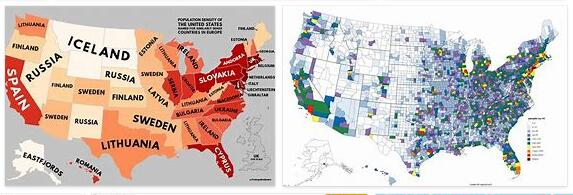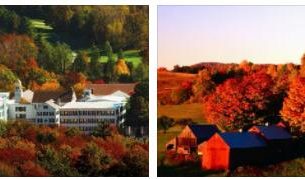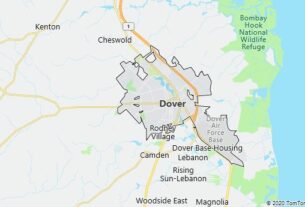DEMOGRAPHIC EVOLUTION AND POPULATION DISTRIBUTION
The natural demographic increase was a decisive factor for the growth of the American population from the beginning and the high birth rate a favorable element for the stable and definitive establishment of colonization; subsequently it was prosperity that helped to keep the birth rate high: in the fifties and sixties of the twentieth century it was still in the 25th century and only subsequently there was a significant decrease, with values slightly higher than those of the advanced countries of good vitality; on the other hand, mortality is very low, although it varies from region to region and from social group to social group (among African Americans for example it is very high), a reflection of the great economic and social imbalances in the United States. United States is a country located in North America according to EXTRAREFERENCE.COM. On average, during the 1960s, annual growth was 1.2%, it then fell between 1993 and 2001 around 0.5%, rose to 0.9% in the period 2005-2010, and then settled on 0.7% in the five-year period 2015-2020 due to the high birth rate of the population recent immigration and the migratory contribution itself. The population, which in 1950 was 150 million units, reached over 281 million residents in 2000, and the estimates made in 2018 speak of over 327 million people. 76.6% of Americans are white and 13.4% black, Asians represent 5.8%. To these are added the Amerindians (1.3%), largely confined to reserves, on the margins of social realities. Finally, those belonging to other ethnic groups are 2.9%. Federal legislation favors the integration of minority components and is aimed at avoiding discrimination at work and in other contexts.
DISTRIBUTION OF THE POPULATION
The average density of the population over the entire territory of the USA is 34.91 residents/km². But the actual distribution is very unequal and this in relation to very different factors, not only, as already described, due to more or less favorable environmental conditions. Human organization is founded on cities, primary centers of the territorial structure of the USA, where, unlike what has generally occurred in Europe, urbanism it is not so much a phenomenon derived from the geographical distribution of the population, superimposed on a network of pre-existing markets, as a primary form, indeed the cities have often been the starting point of rural colonization or, at least, have represented intermediate stages between immigration and the transition to the agricultural economy. In other words, the regional and global network of settlements is structured on the city. The US was actually born at the time of capitalist industrialism and the establishment of the settlement plot followed spontaneous processes (little or nothing influenced the internal state divisions, even if the states are geographically qualified for certain peculiarities), according to impulses given by the economic opportunities promoted by urban centers. The first of these, with an immediately fundamental role in relation to the entire subsequent conquest, were the Atlantic ports, which became not only the bases of trade with Europe, promoter of all the luckiest capitalist initiatives, but also the landing place of immigrants. and starting points for subsequent conquests. Geographical factors have especially privileged New York, Boston, Philadelphia, Baltimore and in general the whole great central-eastern Atlantic region, open not only to ocean trade but well connected – also by waterways such as the Hudson – to inland regions, where the presence of coal and iron minerals has favored the development of industries. The growth of the Atlantic region has been dizzying and represents one of the most populated episodes in world history. Human coagulation in this area, which is also connected to that, also very populous, between the Appalachians and the Great Lakes, has been incessant, although at the beginning of the 2000s the phenomenon of concentration goes out to the advantage of other areas, in particular those overlooking the Gulf and the Pacific. The overall distribution of the population continues to see a very strong densification on the Atlantic belt, in particular in the area of the so-called megalopolis, the great conurbation between Washington and Boston. For some time, however, a sort of demographic counterweight has been forming along the Pacific coast, while the southern states (in particular Texas and Georgia) have also seen their populations increase more than in proportion to the US averages. As a result, the US demographic center of gravity continues to shift westward year after year. The process is, in any case, rather slow, and the higher density values remain by far those relative to the eastern states: even if California is now the most populous state of all, its density remains much more modest than that of almost all the small eastern states where the population can exceed 400 residents / km².traditional suburbs of US cities; these new settlement areas, moreover, tend to reorganize themselves around service centers that are not strictly urban, and no longer depend on cities if not for a few essential services.



